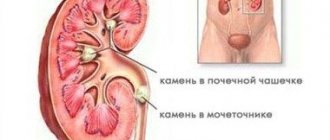If the average resident has problems with the kidneys during any examination, then most are sent to a clinic or medical center to see a urologist, since this specialist is always well-known. But few people know that with some problems in this area it is necessary to contact his colleague, a nephrologist. What is the difference and when to whom to run for help? Both doctors, of course, treat kidney diseases. But a urologist is a surgical specialist. In most cases, he considers those diseases that require surgical intervention (for example, tumors, large stones, renal colic, developmental abnormalities, etc.). If necessary, he performs the necessary operation, although, of course, he treats “without a knife.” In addition, the urologist also deals with the treatment of problems of the “lower floors” of the genitourinary sphere (ureters, bladder), “male diseases” (for example, prostatitis or prostate adenoma). The nephrologist tries to cope with some problems conservatively, without surgery. It is connected if, against the background of a urological or other disease, there is renal failure or other significant damage to the kidney.
In general, you need to understand that these two specialists organically complement each other, and if you are redirected from one doctor to another, this is a harmonious optimization of the treatment process. The result is successful assistance to the patient and a solution to many “painful” kidney problems.
So, a nephrologist can help you successfully manage most kidney diseases. He observes and competently guides patients, helping them solve problems to optimize treatment, prescribing the right diet and selecting the optimal medications for impaired renal function, as well as for diseases where the kidneys are affected secondarily.
What does a nephrologist treat?
The kidneys are a paired organ that performs the function of filtration. Kidney diseases are very insidious: they can often be recognized only with the help of instrumental and laboratory diagnostics. Many people do not even realize that symptoms such as periodic back pain or low-grade body temperature (37°C - 37.2°C) can signal a pathological process in the kidneys. If you have any warning signs, you should contact a nephrologist. This specialist specializes in the treatment, prevention and diagnosis of kidney diseases.
What symptoms should you see a doctor for?
The kidneys are a kind of filter in the body. They pass through and process harmful substances, which then leave the body naturally. In a healthy body, these functions are performed, but if health is impaired, all toxic substances remain in the body and poison it. This can be very dangerous - in serious cases it can even be fatal.
Therefore, at the first signs of disturbances in the functioning of the urinary system, it is necessary to urgently visit a nephrologist, undergo a full diagnosis and, if necessary, immediately begin treatment. Remember that any pathology is much easier to cure at the initial stage. Whereas in advanced cases, surgical intervention may be necessary for treatment.
Treatment methods of nephrologists
Hemodialysis
Hemodialysis involves passing blood through an artificial kidney machine called a hemodialyzer to remove waste, excess fluid, and additional chemicals. Blood returns to the body through a catheter into a vessel of the upper, lower limb or sometimes into the vessels of the neck. Hemodialysis is usually used for end-stage renal failure, when the kidneys have lost about 85-90% of normal function and have a GFR of less than 15. 4-hour sessions three times a week are often required. A nephrologist usually oversees these sessions.
Kidney transplant
A transplant involves removing part or all of a damaged kidney and replacing it with a donor organ. Surgeons perform transplant procedures, but nephrologists usually monitor the patient during recovery.
What symptoms require prompt diagnosis?
- Problems with urine output. In this case, we can talk about meager portions of natural fluid, pain when trying to empty the bladder, or a frequent urge to urinate. This can also include urinary incontinence.
- Unnatural color of urine. If there are admixtures of blood, pus, mucus or white flakes, this is a serious symptom that may indicate inflammatory diseases of the urinary system.
- Unreasonable pain above the lower back. Painful sensations can be of a different nature: sharp, aching, shooting, etc.
- Pain in the kidney is radiating, that is, it can radiate to the side, stomach, etc.
- Severe swelling of the face and legs. This is the first sign that the urinary system is not coping with its functions, and fluid is retained in the body.
- Stable subfebrile body temperature.
- General malaise, fatigue and decreased performance.
- Symptoms of body intoxication: problems with stool, dizziness, nausea and vomiting.
- Regular increase in blood pressure.
Some kidney diseases occur latently, that is, without visible symptoms. The person feels well and does not even suspect that a serious pathological process is developing in the body, which can lead to dangerous complications. It is for this reason that experts recommend taking general blood and urine tests at least once a year, and also not neglecting an ultrasound examination of the kidneys.
When is a child’s nephrologist consultation necessary?
Kidney diseases are often observed in children who have suffered from infectious diseases (tonsillitis, tonsillitis, scarlet fever, acute respiratory infections).
Consultation and treatment with a nephrologist is necessary for the following manifestations:
- An increase or decrease in the volume of urine up to 1/3 of the norm excreted per day;
- Changes in the characteristics of urine - color, smell, consistency;
- Edema syndrome - consultation with a specialist is necessary even if slight swelling appears in the eye area;
- The presence of mucus and blood in the urine, cloudy sediment;
- Redness of the external genital organs, pain when urinating;
- Night urination in children over 4 years of age.
What diseases does a nephrologist treat?
A nephrologist treats diseases such as:
- Pyelonephritis. Characterized by inflammation of the kidney. As a rule, this disease is bacterial in nature. According to statistics, this pathology is more common than others.
- Presence of kidney stones. Their presence can be detected using ultrasound or radiography.
- Amyloidosis. A rare pathology characterized by impaired protein metabolism, which leads to impaired kidney function.
The doctor also treats proteinuria, cystitis, polycystic disease, nephritis, nephropathy and hematuria. Many people wonder how a nephrologist differs from a urologist? A nephrologist treats kidney diseases, and a urologist treats bladder pathologies and diseases.
How much did hepatitis C treatment cost me?
Now, three years later, the situation with the treatment of hepatitis C in Russia has not changed. The state can only offer interferon therapy as free treatment programs. Generics of modern inhibitors cannot be purchased in pharmacies. The situation with the procurement of patented drugs is extremely confusing. Purchases of small quantities of expensive original drugs are periodically announced, but they are not available either in pharmacies or in programs.
This whole story with the treatment of hepatitis once again convinced me that something is wrong with the world order in general. A huge number of people do not have access to modern medicines only because large corporations decide who and how much to make money from. I also learned that we have many competent doctors, caring specialists who, in the face of this global injustice, help people literally survive. Now I'm used to searching for health-related information on the Internet. This helps, when communicating with a doctor personally, to understand who is in front of me: an expert or simply a “person with a profession” who is ossified in the dogmas of the times of obtaining a medical diploma.
Well, the main lesson, or rather a confirmation of well-known truths: you have to pay for everything and some things are better to prevent than to correct later.
I paid about 51,000 RUR for the treatment of hepatitis C
| Cost of drugs including delivery | RUR 44,400 |
| Control studies - qualitative PCR | 3250 R |
| Fibroscan examination | 2500 R |
| Bank commission for international transfer | 900 R |
How does an appointment with a nephrologist proceed?
Before your appointment, you need to prepare. If the problem is serious, it is better to take a blood and urine test a couple of days before your appointment to give the specialist more information to make an accurate diagnosis. All additional studies are prescribed after the appointment. If you have previously had kidney problems, you need to take with you the results of past studies and your personal outpatient card. You must come to your appointment on an empty stomach, as there is a possibility that instrumental diagnostics will be performed on the same day.
To begin with, the specialist conducts an oral interview, during which he finds out what exactly is troubling the patient, how long the symptoms have been observed, and whether close relatives have had similar diseases. Next comes palpation. The patient gets up and takes off his outer clothing. The doctor gently taps or presses on the areas of the kidneys and determines whether the patient experiences pain. Sometimes palpation of the bladder area is required. If necessary, additional types of diagnostics are prescribed. As soon as the results are ready, the patient comes for a second appointment to make a more precise diagnosis and prescribe treatment.
The ABIA clinic provides:
- consultative and diagnostic appointments with patients to determine the functional state of the kidneys and prescribe a treatment regimen;
- conservative treatment of chronic renal failure, including in the elderly;
- reception of pregnant women with kidney pathology, pregnancy planning reception for patients with kidney pathology;
- diagnosis and treatment of patients with kidney damage due to hypertension, systemic and metabolic diseases ;
- reception of patients with anomalies of kidney development to determine further treatment tactics;
- screening diagnostics of patients at risk for kidney diseases ( hereditary predisposition );
- observation of patients during therapy, correction of treatment regimen, treatment in a hospital setting.
You can undergo a comprehensive examination using modern expert-level equipment and receive qualified medical assistance at the ABIA Clinic.
Diagnostic methods
In order to make an accurate diagnosis and determine the severity of the disease, the doctor prescribes a number of diagnostic procedures. If pathological processes are suspected, the doctor may recommend donating a daily portion of urine. To obtain a more accurate clinical picture, an ultrasound examination or tomography of the kidneys is prescribed. When neoplasms are detected, a biopsy is required. If a detailed examination of the tissue structure is required, one has to turn to magnetic resonance imaging and urography with a contrast agent.
Treatment options
How exactly the doctor will treat the patient depends on the diagnosis and severity of the disease. In most cases, the disease can be managed with antibiotic therapy. Remember that positive dynamics can only be achieved with an integrated approach. For example, a doctor may prescribe a course of antibiotics, non-steroidal anti-inflammatory drugs, painkillers, antimicrobials, etc.
Most often, the doctor also recommends following a special diet. As a rule, the nephrologist recommends limiting the intake of salt, fast carbohydrates, spicy or fried foods. For problems with excess weight, proper nutrition with a reduced calorie content is recommended.
Surgery is performed only in cases where conservative therapy does not lead to a positive result. Most often, surgery has to be resorted to if tumors are detected in the kidney. To speed up recovery, it is recommended to resort to measures to increase blood circulation in the pelvic area: for example, walking a lot, jogging or swimming (the load should be discussed with your doctor). You should also maintain a healthy lifestyle and give up alcohol.
For urolithiasis, physiotherapeutic treatment may be prescribed to crush and remove stones. These procedures are an excellent alternative to surgery. If the stones are large, they can be removed laparoscopically using punctures.
Remember that diseases of the urinary system are much easier to prevent than to cure. At least once a year, take a urine test, and if you already have kidney disease, undergo an ultrasound examination. This will help you maintain health and well-being for a long time.
Renal parameters of biochemical blood tests
For some, biochemical blood test indicators allow the doctor to draw a conclusion about the condition of the kidneys. The analysis is carried out in the morning on an empty stomach. Preparation for the study is as follows:
- the day before the collection of biological material, alcohol intake is excluded;
- at least 12 hours must pass between blood collection and the last meal;
- one hour before the test, you need to stop smoking;
- Before the test, you can only drink water.
Let's look at the main research indicators that help detect kidney disease.
Creatinine
The substance, which is formed in muscle tissue, then enters the blood and is excreted from the body by the kidneys. The primary task of creatinine is to provide the body with the energy necessary for muscle contraction. The level of the substance in the blood largely depends on muscle mass. That is why its concentration in the blood of men is higher than that of women and children.
Creatinine is a non-threshold substance that does not undergo reabsorption in the renal tubules and is completely excreted by the urinary system at any concentration in the blood. With stable muscle load and good kidney function, its concentration in a person’s blood is quite constant. Therefore, the level of creatinine in the blood directly reflects the functional state of the kidneys.
Reference values of the indicator are presented in the table ⇓⇓⇓
| Age | Creatinine level, µmol/l |
| <1 year | 18-35 |
| 1-14 years | 35-110 |
| Men | 80-115 |
| Women | 53-97 |
High levels of the substance in the blood may indicate the following kidney diseases:
- acute renal failure - a rapidly developing disorder of the kidneys;
- chronic renal failure - gradual decline of renal function;
- glomerulonephritis - damage to the glomeruli, which may be a consequence of infection or an autoimmune process;
- pyelonephritis is an inflammatory process in the renal tubules.
Also, the cause of a high rate may be ureteral obstruction caused by an inflammatory process or a mechanical factor. For example, obstruction can occur with urolithiasis. If a stone enters the ureter, the outflow of urine is disrupted, and accordingly the level of creatinine in the blood increases.
A high level of the indicator does not always indicate kidney problems. The concentration of the substance in the blood increases with fever, injuries with tissue destruction, dehydration, severe physical exertion, and the predominance of meat products in the diet. Also, increased creatinine values can be observed with hyperthyroidism, acromegaly, and gigantism.
Low values are observed in the early stages of pregnancy, with prolonged fasting or lack of meat products in the diet, or excess water content in the body.
Urea
The formation of urea occurs in several stages:
- The breakdown of proteins produces ammonia, a substance toxic to the body.
- Ammonia is neutralized by liver cells, turning into urea, which is excreted from the body by the kidneys.
The body does not use this chemical compound in any way, but only gets rid of it. Since the process of urea formation is continuous, a small amount of the substance is constantly in the blood. Reference values of the indicator are presented below ⇓⇓⇓
As a rule, an increase in urea levels in the blood is caused by the same factors as an increase in creatinine levels. But low levels most often indicate liver pathologies. The indicator also decreases with nephrotic syndrome, low-protein diet, overhydration, and in early pregnancy.
Uric acid
It is formed as a result of the exchange of purines - nitrogen-containing substances that make up nucleic acids. In addition, uric acid is a result of the digestion of foods high in purines. Most of the substance is excreted from the body by the kidneys, a smaller part by the gastrointestinal tract. Reference values for uric acid levels in the blood are presented in table ⇓⇓⇓
An increase in the indicator may be a sign of kidney failure, as well as:
- gout - deposits of urate crystals in the tissues;
- Lesch-Nychen syndrome - a hereditary pathology in which the synthesis of uric acid is increased;
- malignant diseases of the hematopoietic system;
- alcohol intoxication of the body;
- taking diuretics;
- the predominance in the diet of foods rich in purines - fish, veal, offal, legumes;
- excessive physical activity.
A low rate is observed with renal tubular dysfunction. For example, the level of uric acid in the blood decreases in Fanconi syndrome, a hereditary disease characterized by a general disorder of proximal tubular transport.
Other reasons for low levels are disorders of purine metabolism and a low-purine diet.
Total protein
The indicator reflects the concentration of all proteins in the blood and serves as a marker not only of kidney pathologies, but also diseases of the liver, thyroid gland and other organs. The reference values of the indicator are as follows ⇓⇓⇓
High levels of total protein in the blood are observed with:
- dehydration of the body;
- acute and chronic infectious pathologies;
- autoimmune processes;
- malignant formations.
Low values of the indicator may indicate glomerulonephritis, nephrotic syndrome. In addition, the concentration of protein in the blood decreases with liver diseases, bleeding, hyperfunction of the thyroid gland, fasting, during pregnancy, and during breastfeeding.
Glomerular filtration rate (GFR), Rehberg test
Nephrons (the structural units of the kidney) consist of glomeruli and tubules. The first stage of urine formation occurs in the renal glomeruli - filtration of almost all components of plasma, except for high-molecular proteins and blood cells. Reverse reabsorption of some substances occurs in the renal tubules, i.e. tubular reabsorption reflects the state of the renal concentration function.
In some kidney pathologies, this process is disrupted.
To assess the functional state of various parts of the nephron, several methods are used: determining GFR and performing the Rehberg test. GFR is calculated using a special formula that reflects the patient's age, gender, weight, height, race, and the individual's blood creatinine level.
Rehberg test - the test reflects several indicators: GFR, tubular reabsorption and minute diuresis. There are several options for conducting a test:
- The daily amount of urine is collected. The first morning portion of urine is passed into the toilet, and the time of urination is recorded. All daily urine, including the morning portion of the next day, is collected in a sterilized container with a capacity of 2-3 liters. The last urination should coincide with the time noted the day before. During the collection of biological material, the container with urine should be stored in the refrigerator, but not frozen. After collecting the last portion of urine, the total volume of urine is measured. The biological material is mixed, and approximately 30-50 ml is taken from it into a small container; the container is marked, indicating the daily volume of urine. For example: “Diuresis 1100 ml.” The biological material is delivered to the laboratory as quickly as possible, where blood is also drawn from a vein.
- Currently, the most commonly used option is one that does not require collecting a daily amount of urine. A two-hour portion of urine is collected and blood is taken from the patient’s vein during this period of time. In the laboratory, the level of creatinine in urine and blood is determined and the indicators of minute diuresis, GFR, and tubular reabsorption are calculated using special formulas.
Reference values for creatinine clearance are presented in the table, units of measurement are ml/min/1.7 m².
The accuracy of the research results largely depends on proper preparation. In this regard, a few days before the start of urine collection, you need to exclude:
- strong physical activity;
- consumption of alcoholic beverages, caffeine;
- taking diuretics, drugs containing ascorbic acid.
It is also worth limiting your consumption of meat products.
What diseases can the study detect?
- The study of glomerular filtration is of great practical importance, since in a number of renal pathologies (chronic glomerulonephritis, lupus nephritis, diabetic glomerulosclerosis), a decrease in GFR is the earliest sign of incipient chronic renal failure.
- High GFR values are a sign of nephrotic syndrome, the onset of diabetes mellitus, and arterial hypertension.
- Also, the indicator may deviate from the reference values for physiological reasons. For example, an increase in GFR is observed with excess protein in the diet, taking diuretics, and drinking plenty of fluids; decrease - with dehydration, with a salt-free diet.
- A decrease in tubular reabsorption occurs early in patients with polycystic kidney disease, hydronephrosis, and pyelonephritis. In kidney diseases accompanied by predominant damage to the glomeruli (glomerulonephritis, etc.), tubular reabsorption decreases much later than glomerular filtration.







